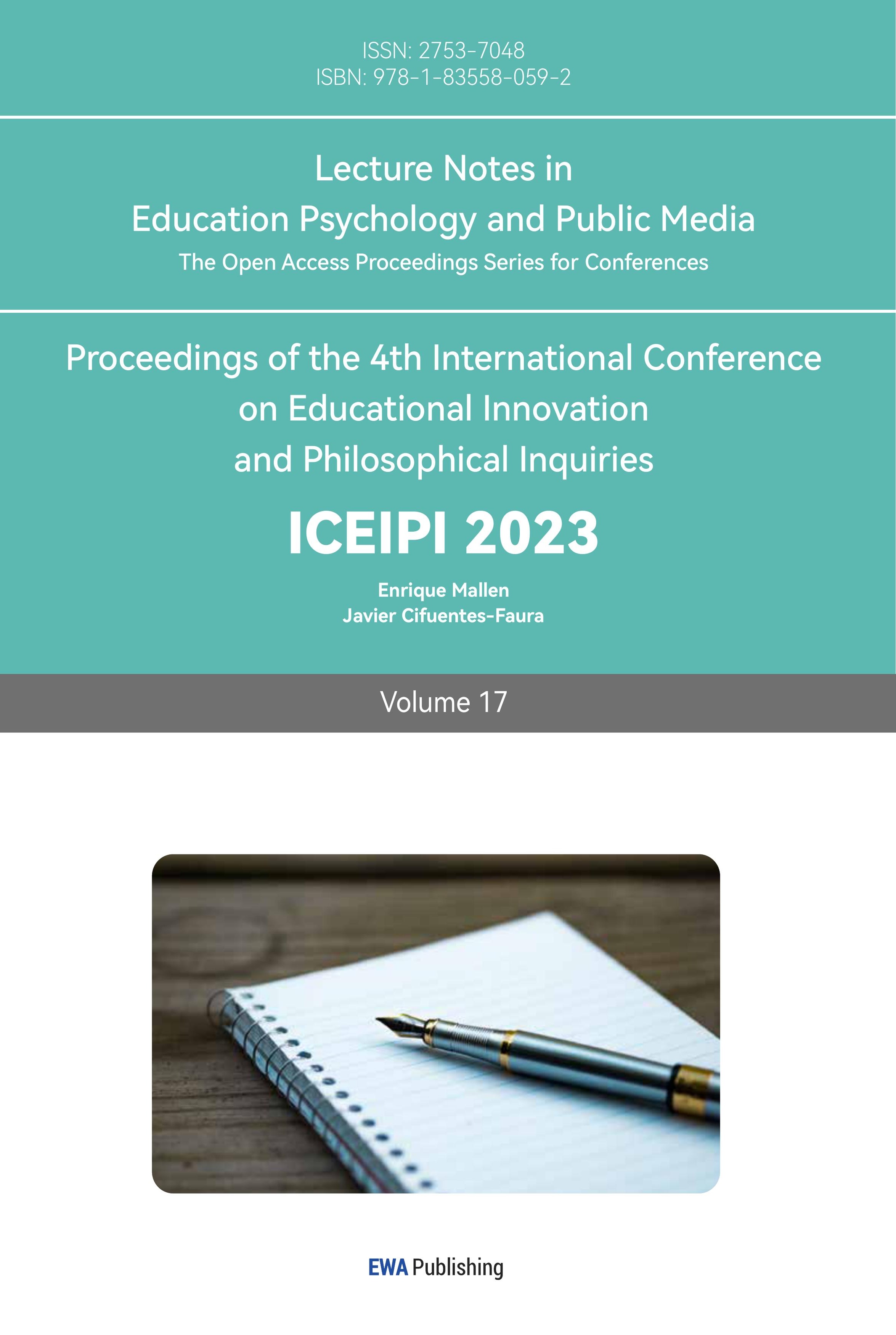References
[1]. Friedman, E. (1997). Chinese nationalism, Taiwan autonomy and the prospects of a larger war. Journal of Contemporary China, 6(14), pp.5–32. doi:10.1080/10670569708724263.
[2]. Hsieh, P.L. (2009). The Taiwan Question and the One-China Policy: Legal Challenges with Renewed Momentum. Die Friedens-Warte, [online] 84(3), pp.59–81. Available at: https://www.jstor.org/stable/23773999#metadata_info_tab_contents [Accessed 8 Dec. 2022].
[3]. Nathan, A.J. (2000). What’s wrong with American Taiwan policy. The Washington Quarterly, 23(2), pp.91–106. doi:10.1162/016366000560980.
[4]. Swaine, M.D. (2004). Trouble in Taiwan. Foreign Affairs, 83(2), p.39. doi:10.2307/20033901.
[5]. Wang, Q.K. (2000). Taiwan in Japan’s Relations with China and the United States after the Cold War. Pacific Affairs, 73(3), p.353. doi:10.2307/2672024.
[6]. Zhao, Q. (2005). Beijing’s dilemma with Taiwan: war or peace? The Pacific Review, 18(2), pp.217–242. doi:10.1080/09512740500162980.
[7]. Leachman, R.C. and Leachman, C.H., 2000. E-commerce and the changing terms of competition in the semiconductor industry. University of California at Berkeley, CSM report.
[8]. Carvalho, M., Azevedo, A. and Massuquetti, A., 2019. Emerging Countries and the Effects of the Trade War between the US and China. Economies, 7(2), p.45.
[9]. Liu, T. and Woo, W.T., 2018. Understanding the US-China trade war. China Economic Journal, 11(3), pp.319-340.
[10]. Okimoto, D.I., Sugano, T., Weinstein, F.B. and Flaherty, M.T., 1984. Competitive edge: the semiconductor industry in the US and Japan (Vol. 1). Stanford University Press.
[11]. Flamm, K., 2010. Mismanaged Trade ? : Strategic Policy and the Semiconductor Industry. Brookings Institution Press.
[12]. Karabuk, S. and Wu, S.D., 2003. Coordinating strategic capacity planning in the semiconductor industry. Operations Research, 51(6), pp.839-849.
[13]. Poitiers, N. and Weil, P., 2021. A new direction for the European Union’s Half-hearted semiconductor strategy (No. 17/2021). Bruegel Policy Contribution.
Cite this article
Chen,X. (2023). Will the US and China Go to War over Taiwan?. Lecture Notes in Education Psychology and Public Media,17,8-11.
Data availability
The datasets used and/or analyzed during the current study will be available from the authors upon reasonable request.
Disclaimer/Publisher's Note
The statements, opinions and data contained in all publications are solely those of the individual author(s) and contributor(s) and not of EWA Publishing and/or the editor(s). EWA Publishing and/or the editor(s) disclaim responsibility for any injury to people or property resulting from any ideas, methods, instructions or products referred to in the content.
About volume
Volume title: Proceedings of the 4th International Conference on Educational Innovation and Philosophical Inquiries
© 2024 by the author(s). Licensee EWA Publishing, Oxford, UK. This article is an open access article distributed under the terms and
conditions of the Creative Commons Attribution (CC BY) license. Authors who
publish this series agree to the following terms:
1. Authors retain copyright and grant the series right of first publication with the work simultaneously licensed under a Creative Commons
Attribution License that allows others to share the work with an acknowledgment of the work's authorship and initial publication in this
series.
2. Authors are able to enter into separate, additional contractual arrangements for the non-exclusive distribution of the series's published
version of the work (e.g., post it to an institutional repository or publish it in a book), with an acknowledgment of its initial
publication in this series.
3. Authors are permitted and encouraged to post their work online (e.g., in institutional repositories or on their website) prior to and
during the submission process, as it can lead to productive exchanges, as well as earlier and greater citation of published work (See
Open access policy for details).
References
[1]. Friedman, E. (1997). Chinese nationalism, Taiwan autonomy and the prospects of a larger war. Journal of Contemporary China, 6(14), pp.5–32. doi:10.1080/10670569708724263.
[2]. Hsieh, P.L. (2009). The Taiwan Question and the One-China Policy: Legal Challenges with Renewed Momentum. Die Friedens-Warte, [online] 84(3), pp.59–81. Available at: https://www.jstor.org/stable/23773999#metadata_info_tab_contents [Accessed 8 Dec. 2022].
[3]. Nathan, A.J. (2000). What’s wrong with American Taiwan policy. The Washington Quarterly, 23(2), pp.91–106. doi:10.1162/016366000560980.
[4]. Swaine, M.D. (2004). Trouble in Taiwan. Foreign Affairs, 83(2), p.39. doi:10.2307/20033901.
[5]. Wang, Q.K. (2000). Taiwan in Japan’s Relations with China and the United States after the Cold War. Pacific Affairs, 73(3), p.353. doi:10.2307/2672024.
[6]. Zhao, Q. (2005). Beijing’s dilemma with Taiwan: war or peace? The Pacific Review, 18(2), pp.217–242. doi:10.1080/09512740500162980.
[7]. Leachman, R.C. and Leachman, C.H., 2000. E-commerce and the changing terms of competition in the semiconductor industry. University of California at Berkeley, CSM report.
[8]. Carvalho, M., Azevedo, A. and Massuquetti, A., 2019. Emerging Countries and the Effects of the Trade War between the US and China. Economies, 7(2), p.45.
[9]. Liu, T. and Woo, W.T., 2018. Understanding the US-China trade war. China Economic Journal, 11(3), pp.319-340.
[10]. Okimoto, D.I., Sugano, T., Weinstein, F.B. and Flaherty, M.T., 1984. Competitive edge: the semiconductor industry in the US and Japan (Vol. 1). Stanford University Press.
[11]. Flamm, K., 2010. Mismanaged Trade ? : Strategic Policy and the Semiconductor Industry. Brookings Institution Press.
[12]. Karabuk, S. and Wu, S.D., 2003. Coordinating strategic capacity planning in the semiconductor industry. Operations Research, 51(6), pp.839-849.
[13]. Poitiers, N. and Weil, P., 2021. A new direction for the European Union’s Half-hearted semiconductor strategy (No. 17/2021). Bruegel Policy Contribution.









